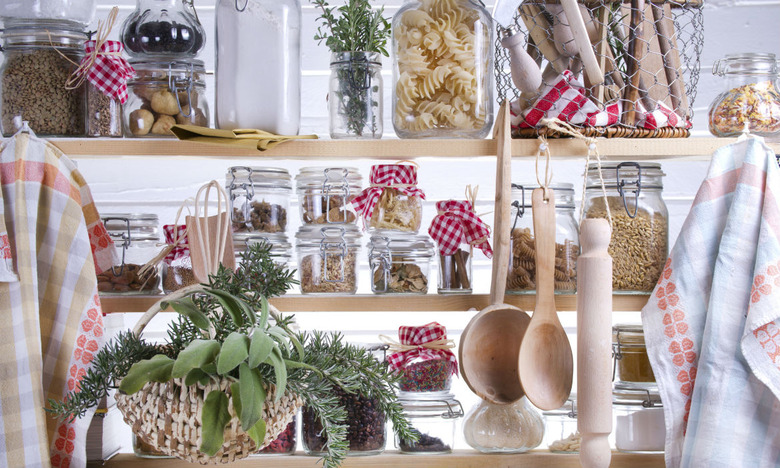5 Creative Ways To Organize Your Spring Pantry
Spring brings with it a glimmer of sunshine, lighter days, and an inexplicable desire to reorganize and clean out our kitchens, our wardrobes, and our entire home. Given how much time we spend in the kitchen, we think the first place you should start spring cleaning is the pantry.
Before you begin, go and buy yourself plenty of glass jars, stackable plastic containers, and a label-maker: These nifty items are going to be your new best friends.
Empty the Pantry
First, you need to take everything out of the pantry. It'll be messy, and you'll end up with dust, flour, and random pasta shapes all over the floor, but every proper reorganization, has to start with a thorough cleaning. Wipe down all the shelves, and then start sorting through everything you've removed. There are three basic categories you can follow: If it's expired, then throw it out; if it's something you've never opened and never will, donate it to a food bank; if it's something you'll use again, opened or unopened, keep it.
Categorize Carefully
Now that you are left only with the food that you are actually going to eat, it's time to categorize everything. How exactly you do this is up to you, and it depends on your cooking and eating habits. Typical categories to follow include pasta and grains, spices and dried herbs, pulses, oils, snacks, canned foods, cereal, tea and coffee, and baking supplies. Make sure that the system makes sense to you, and that it's clear enough that in a month's time you won't forget what's meant to go where.
Decant Everything
There's no point having a well-categorized pantry if everything in each section is heaped on top of each other in a chaotic mess. Buy yourself lots of sealable glass jars, stackable plastic containers, and a label-maker, and decant all of your impractically packaged ingredients into a clearly labeled container. You'll be able to squeeze a lot more into a small space if all the packaging fits neatly together, and using clear containers will make everything a lot easier to find.
Stack Neatly
Once everything is neatly organized and well-sealed in reusable containers, it's time to arrange the contents of your pantry on the shelves. The aim of this process is to make everything as visible as possible: The taller items need to sit at the back of the shelves, and the smaller ones at the front. Keeping everything in height order, and grouping together any multiples of the same item, will mean that it's always easy to find exactly what you're looking for in your pantry.
Strategic Shelf Positioning
Finally, you need to plan where in your pantry every category should be placed. This last step should be based on how much the items are used: If you've got lots of pulses that you rarely use, put them on the top shelf, as you'll be reaching for them less often. If you have kids and want them to be able to help themselves to breakfast in the morning, make sure that the cereal lives on a low, accessible shelf. Thinking through how you use the food in your pantry is the best way to figure out how to rearrange it in a foolproof way that you'll be able to maintain.
